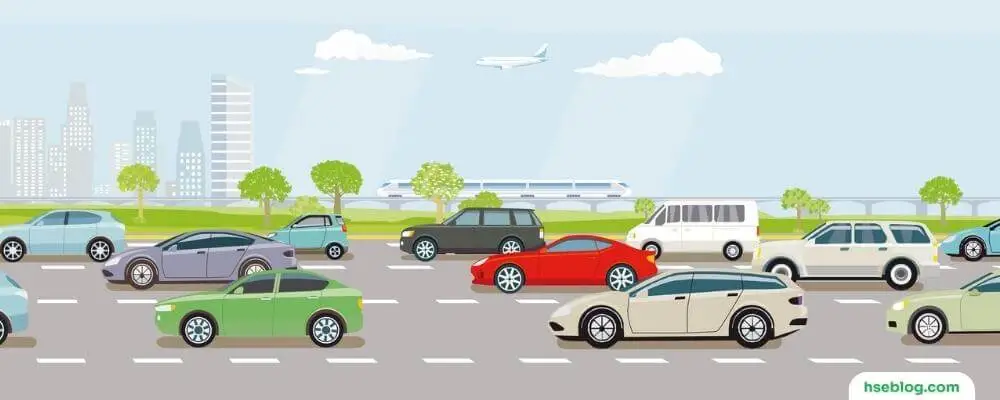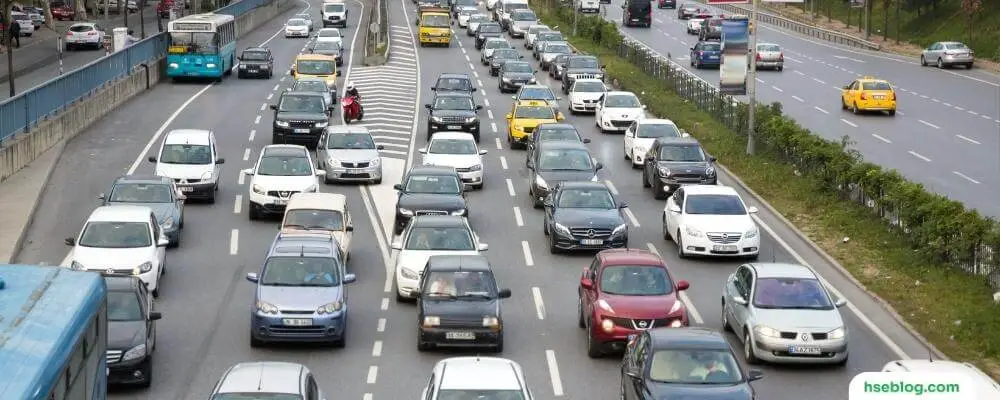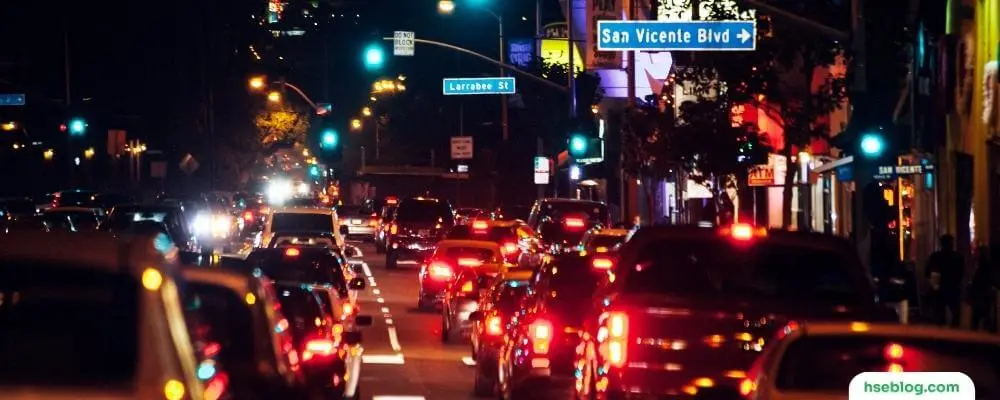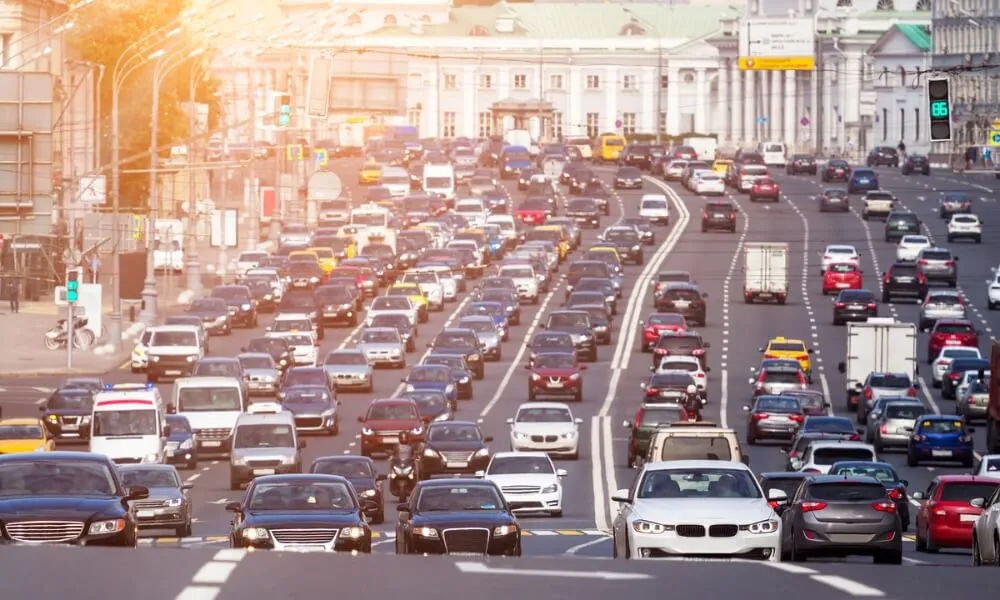Heavy traffic can be a daunting and frustrating experience for even the most seasoned drivers. The endless sea of cars, trucks, and motorcycles, combined with unpredictable maneuvers, can lead to a higher risk of accidents and make navigating through the chaos quite challenging.
In this blog post, we will share essential tips and strategies to help you stay safe and composed during those stressful heavy traffic situations. From maintaining proper distance to mastering the art of defensive driving, our guide will help you confidently navigate through the hustle and bustle of the road. So, buckle up, relax, and dive into the world of safe driving in heavy traffic!
Driving Safely in Heavy Traffic
Heavy traffic can be stressful and challenging for even the most experienced drivers. It’s essential to remain calm, focused, and patient in these situations to ensure your safety and the safety of others on the road. Here are some tips for driving safely in heavy traffic:
1. Remove all distractions
In heavy traffic conditions, the road will be crowded with cars, the traffic flow will be irregular, and people will start getting impatient, leading to them trying to merge where they likely shouldn’t. The last thing you need is a distraction preventing you from paying attention to these things. Limit your distractions by:
- Turning off your cell phone or turning it to silent.
- Turning off your music or turning it down.
- Telling your passengers to quiet down until you’re free of dense traffic.
2. Drive defensively
Defensive driving covers a wide range of skills you should employ to prevent dangerous situations on the road before these occur. You should plan for ways to react in an emergency situation, like if another vehicle were to try and merge into you. In addition to this, you should also:
- Keep your eyes scanning traffic and road conditions.
- Identify unsafe vehicles, such as erratically merging across lanes, speeding dangerously, or drifting into a lane.
- Follow the flow of traffic.
- Signal before making a turn or merging into a lane.
- Allow plenty of space between you and other vehicles/structures.
- Never drive while tired or emotionally agitated.

3. Plan your driving times to avoid heavy traffic
Planning your driving times carefully is wise to circumvent getting caught up in heavy traffic congestion. You can significantly reduce the flow of traffic on your route by leaving fifteen minutes before the start or after the end of rush hour. The time during which rush hour occurs may differ from one city to another, but in general, the peak period of heavy traffic usually falls between 8 and 9 AM and between 5 and 6 PM.
Hence, scheduling your driving times accordingly is recommended to avoid being stuck in traffic for an extended period. Doing so can optimize your travel time and avoid unnecessary delays due to traffic congestion.
4. Pay attention to heavy traffic in the distance
When approaching a crowded section of the road, you should take your foot off the accelerator and coast forward, allowing friction to slow your vehicle. This will moderate your speed while saving you gas.
- Depending on your distance, you may also need to use your brake to slow to an acceptable speed when approaching heavy traffic.
- By slowing your speed, there is a chance that the heavy traffic will break up before you reach it. This constant, slower speed will save you gas and create less potential for accidents.
5. Use lower gears to improve your engine efficiency
Even in automatic cars, where you don’t normally have to shift out of drive except to park or move in reverse, there are sometimes lower gear settings. These are usually noted on your gearshift by the letter “D” followed by a number, like D2 or D3.
- D3 or 3 is normally used for stop-and-go driving.
- D2, 2, or S (which stands for ‘slow’) locks your car into second gear, which can be useful if you are driving up or down a steep hill.
- Lower gears will also brake more quickly due to naturally occurring “engine braking.”
6. Allow a three-second distance between you and the traffic in front of you
You should gauge how many seconds of distance is between you and the next car ahead. Do this by picking a feature, like a road sign, and counting slowly up from “one” as the car in front passes the sign.
- When your car is even with the sign stop counting. The number you have stopped counting on represents how many seconds of distance is between you and the car in front of you.
- Adjust your speed accordingly. More time between you and the car in front will mean more reaction time in the event of sudden braking or some other emergency.
7. Drive at or 5 mph (8.0 km/h) below the speed limit, even on a highway
It’s important that you feel safe when driving, which might mean you need to drive a little slower than the traffic flow. However, driving too slow can make other drivers around you impatient, leading to dangerous driving situations.
- The speed of stop-and-go traffic will be greatly reduced, meaning that if you or another car do actually collide, the damage will likely be minimal and not physically serious.

8. Prepare yourself for emergency maneuvers
Impatient drivers can make poor decisions that might require them to take action to prevent an accident. Sometimes, you may have to merge out of your lane and onto a shoulder.
- Keep your eyes scanning traffic, the shoulder of the road, and potential places you might direct your car if you have to make emergency maneuvers.
9. Exit the freeway if you are too uncomfortable
Your emotional state affects your driving ability, and extreme anxiety can negatively impact your ability to handle heavy traffic. If you ever feel too overwhelmed by a driving situation, you should:
- Exit the freeway and take a break at a rest stop until you’ve calmed down or traffic is lighter.
- Turn on your emergency lights and pull well off to the side of the shoulder of the road. Relax and listen to some music until you are more comfortable with the traffic flow.
Driving a Manual (Stick Shift) in Heavy Traffic
Driving a manual (stick shift) car in heavy traffic can be a challenging and frustrating experience, especially for inexperienced drivers. However, with some practice and the right techniques, you can navigate traffic more smoothly and maintain better vehicle control. Here are some tips for driving a manual car in heavy traffic:
1. Give yourself extra space between you and the car ahead
You’ll want to allow a little more room than you would normally when driving an automatic vehicle. This will give you time to crawl forward in a lower gear while traffic starts to move forward again.
- This way, you don’t have to spend time, effort, and wear and tear on your clutch shifting, and you won’t have to ride your clutch while you wait for traffic to resume.
- Stop-and-go traffic will likely be best navigated in first or second gear, depending on your engine and how these gears handle in your manual transmission vehicle.
- Beware impatient drivers cutting you off and merging into the extra space before you.
2. Slow your vehicle with engine braking
Manual transmission vehicles can exert a braking force called “engine braking” or “shift braking” by releasing the accelerator and shifting safely into a lower gear. You’ll have to wait until the RPMs of your car are at an acceptable level for you to downshift, but when you do, your car will experience a gentle braking effect.
- When you release the accelerator, the throttle in your engine closes, creating a partial vacuum that creates engine resistance and slows the speed of your vehicle.
- Generally, lower gears will exert a greater braking force on your vehicle.

3. Remain calm when cars tailgate
Depending on your region or country, there may be slight differences in driving laws. Still, generally, drivers are expected to allow cushion distance between the operator’s car and cars in front. This protects manual transmission drivers, as stick shifts often roll back slightly when shifting into first gear.
- When shifting into first with little space behind you, or if you are on a hill, give your car more gas as you shift into first and slowly let out the clutch.
4. Maintain a constant speed that is slightly slower than the traffic
Impatient drivers in stop-and-go traffic often accelerate faster than necessary to traverse the distance between them and the stopped car in front of them. This is highly inefficient, as the unnecessary higher speeds will cost you more fuel and not get you to your destination any sooner.
For a manual transmission, this is even worse because you’ll have to use your clutch to downshift or come to a stop. A better strategy is to:
- Accelerate at a steady speed that is slightly below the flow of traffic. This way, you can coast forward in your chosen gear without having to downshift or come to a stop.
- This slow-but-steady method will also create a solid buffer between you and the car in front of you. You should, however, be ready to downshift if impatient drivers merge into this buffer space.
Conclusion
Driving in heavy traffic can be a stressful and challenging experience, but with the right mindset and techniques, you can stay safe and arrive at your destination without incident. To drive safely in heavy traffic, you should always stay focused, maintain a safe following distance, anticipate the actions of other drivers, and be patient. Remember to use your signals, avoid distractions, and stay calm even when faced with aggressive or reckless drivers. Practicing these tips consistently can make your commute in heavy traffic more manageable and reduce the risk of accidents. Stay alert, stay safe, and always prioritize your well-being and that of others on the road.

